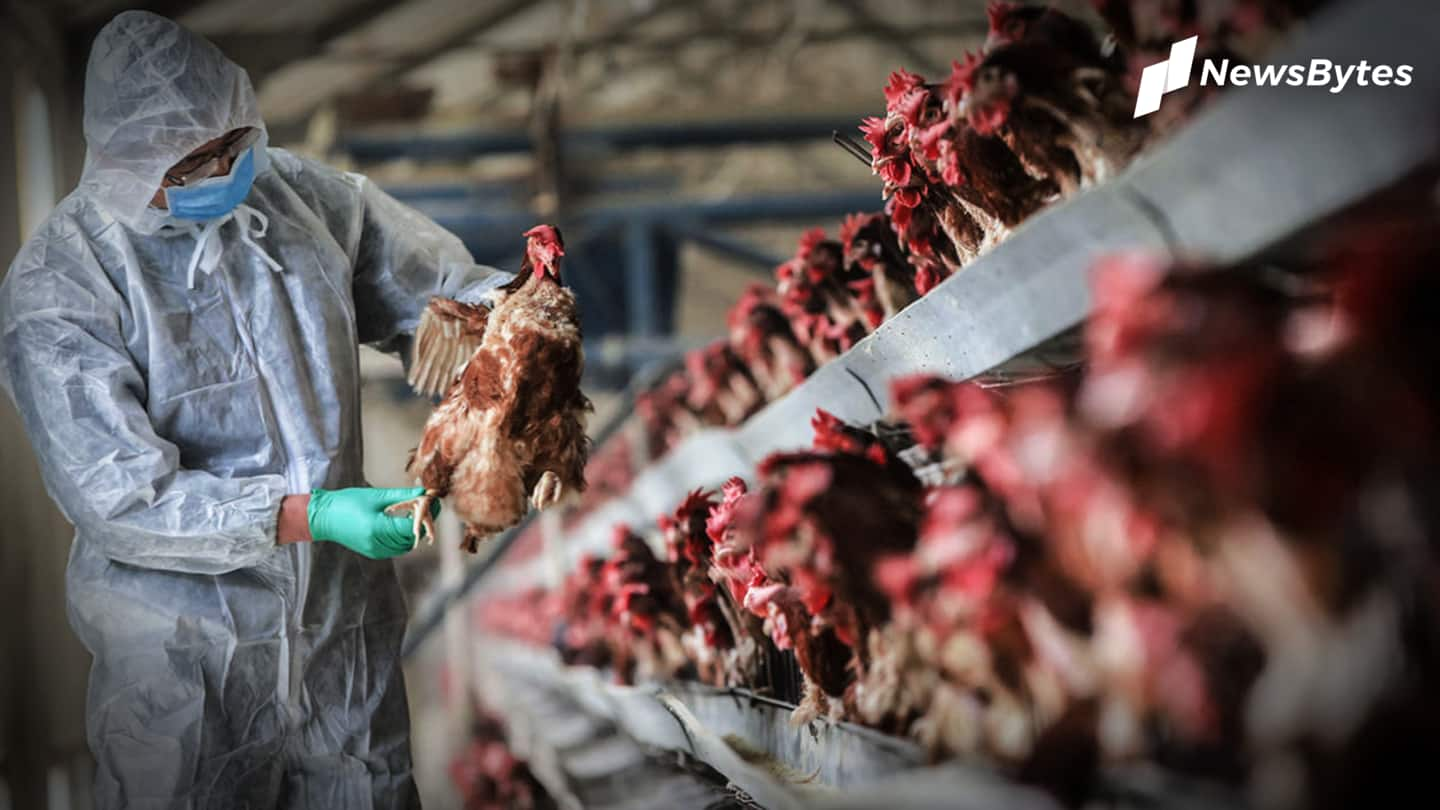
China reports first human case of H10N3 bird flu
What's the story
China on Tuesday reported the first case of human infection involving the H10N3 strain of bird flu.
China's National Health Commission identified the patient as a 41-year-old man from Zhenjiang city of the Jiangsu province.
The NHC said H10N3 is less pathogenic, and hence, the risk of a large-scale spread remains low.
The world is still battling COVID-19, which was first detected in China.
Case
Patient diagnosed last week; contacts traced
The 41-year-old man was diagnosed with the H10N3 avian influenza virus on May 28. The infection was transmitted from poultry.
The Chinese Centre for Disease Control and Prevention (CDC) had conducted a genome sequence and confirmed the presence of the H10N3 strain.
The NHC said the patient was stable and ready to be discharged. Local authorities have also kept his contacts under medical observation.
Information
Experts advise avoiding contact with poultry
Experts have advised people in the region to avoid coming in contact with sick or dead poultry. They also recommend avoiding direct contact with live birds. The NHC stressed special attention to food hygiene, masks, awareness about precautions, and monitoring one's fever and respiratory symptoms.
Strain
H10N3 'not a common virus'
H10N3 is "not a very common virus," Filip Claes told Reuters. Claes is a regional laboratory coordinator of the Food and Agriculture Organization's (FAO) Emergency Centre for Transboundary Animal Diseases (ECTAD) at the Regional Office for Asia-Pacific.
In the 40 years to 2018, roughly 160 isolates were reported, mostly in wild birds or waterfowl in Asia and some parts of North America, he said.
Other strains
Many avian flu strains present in China
Notably, several strains of avian influenza are prevalent in China.
However, there have been no reports of a significant number of humans contracting avian flu since the H7N9 outbreak in 2016-2017, which killed around 300 people.
This February, China had reported an H5N8 outbreak in Lianyungang, Jiangsu. In April, a highly pathogenic H5N6 virus was detected in wild birds in Shenyang, Liaoning.